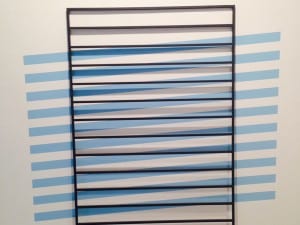The 31st Bienal de São Paulo will deal with things that don’t exist, it is a poetic call to the promise of art, and addresses these things that don’t exist in several ways: how to talk about them, how to learn from them, how to live with them, how to struggle with them.
Holding a focus upon the way that contemporary art can engage with and activate histories, individuals and communities today, and held within the complex structure that is the Ciccillo Matarazzo pavilion, the Bienal will take visitors on one of several possible journeys through the building, Brazil and out into the world.
The exhibition will experiment with the various divided areas of the pavilion, each of which has its own architectural logic and particular qualities: the ground floor, Park, opens up to the surrounding landscape and is a space for reception, events and meetings; Ramp gives a series of curvaceous spaces linked by a monumental spiral which is the pavilion’s main access point; Columns articulates the largest continuous space of the pavilion on the second floor, dividing it into densities with areas of light and shadow, or sound and silence, that create an interplay of experiences. Finally, a small central area isolates a collection of singular artistic statements and acts to separate the three former spaces.
The proposition behind studying things that don’t exist is the idea that through imagination and mental transformation which can manifest as artistic projects, these things can become actualised or articulated. By allowing art to tap into latent mystical or spiritual qualities and apply them to current conditions, the works within the Bienal begin to connect to different languages that discuss the world at present whilst also reexamining old histories in a contemporary context.
The Bienal will include over 70 projects, produced by about 100 participants and totalling around 250 artworks. Divided into ‘projects’ rather than individual artworks, the Bienal strives to create a distance from the traditional idea of an autonomous artwork made in a studio by an artist. Rather than according to the aesthetic criteria of modernism and progress, the structure of Bienal instead intends to introduce a broader range of contemporary cultural practices and include people working in other disciplines, such as educators, sociologists, architects and performers.
This approach sets up an interesting and distinct new hierarchy of sources and inspirations, one that recognises the possibilities in the pre-modern and the non-modern, in spiritualism or popular culture, to offer different readings of contemporary conditions. In including multiple practices and schools of thought, the concepts and messages of each project are strengthened; therefore the 31st Bienal is likely to be well remembered for its emphasis upon collective imagination, social activism and political conflict.
Bienal de São Paulo: How to talk about things that don’t exist, 6 September – 7 December 2014. Fundação Bienal de São Paulo, Ciccillo Matarazzo pavilion, Parque Ibirapuera, Portão 3, Pavilhão Ciccillo Matarazzo. For more information visit www.bienal.org.br.
Credits
1. Exhibition view during the 28th São Paulo Biennial, in a section of the Oscar Niemeyer-designed Ciccillo Matarazzo Pavilion, the main exhibition venue, controversially left entirely empty, São Paulo, 2008. Photo by Andres Otero. Courtesy São Paulo Biennial.
Follow us on Twitter @AestheticaMag for the latest news in contemporary art and culture.





